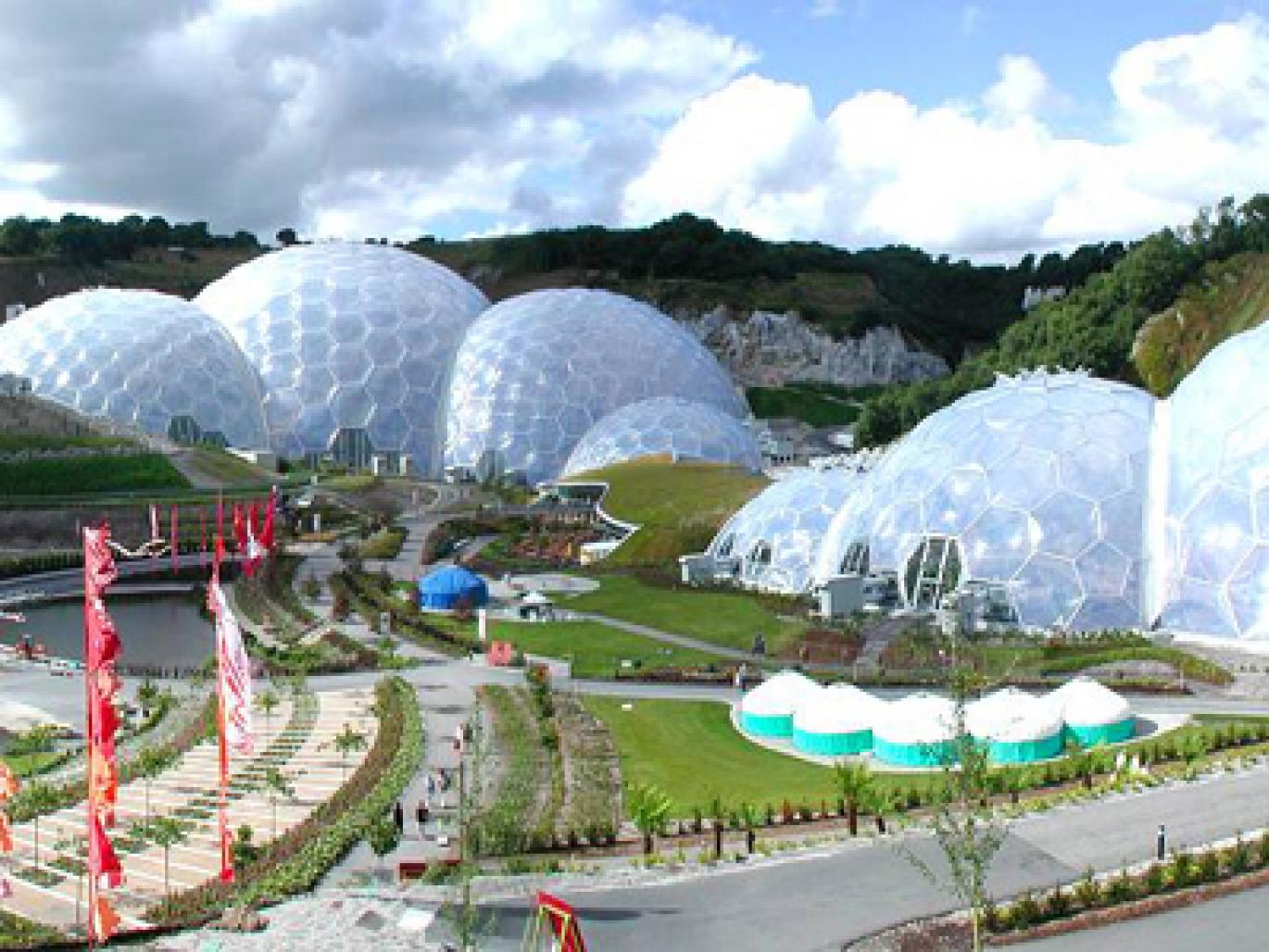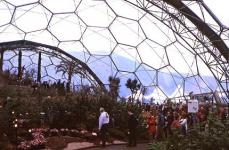The Eden Project is the largest plant enclosure in the world, built in the lightest and most ecological way possible. The project is situated in a 15 hectare landscaped site, formerly a worked-out Cornish clay pit. It was built in two phases, beginning with a hilltop Visitor Centre, which opened to the public in May 2000.
The main focus of the Eden Project is a sinuous sequence of eight interlinked geodesic domes threading around the site, encapsulating humid tropic and warm temperate regions. The centre attracted almost 1.000.000 visitors to its showcase 'Big Build', which afforded visitors a view of the construction of these 'biomes'. The biomes are an exercise in efficiency, both of space and material. Structurally, each dome is a hex-tri-hex space frame reliant on two layers. The efficiency of the frame depends on the components of the geometric shapes: steel tubes and joints that are light, relatively small and easy transportable. The cladding panels triple-layered pillows of high performance ETFE foil are equally efficient, with maximum surface area and minimum perimeter detailing. This maximises the amount of light penetration while minimising the weight of the supporting structure.
The biomes were unveiled on 17 March 2001 and received nearly two million visitors in the first year of opening. The project is now one of the top three charging attractions in the UK and the second most visited destination outside London. It now employs about 500 staff, has filled every educational place in its capacity and has brought 150m pound into the local economy.
2001






